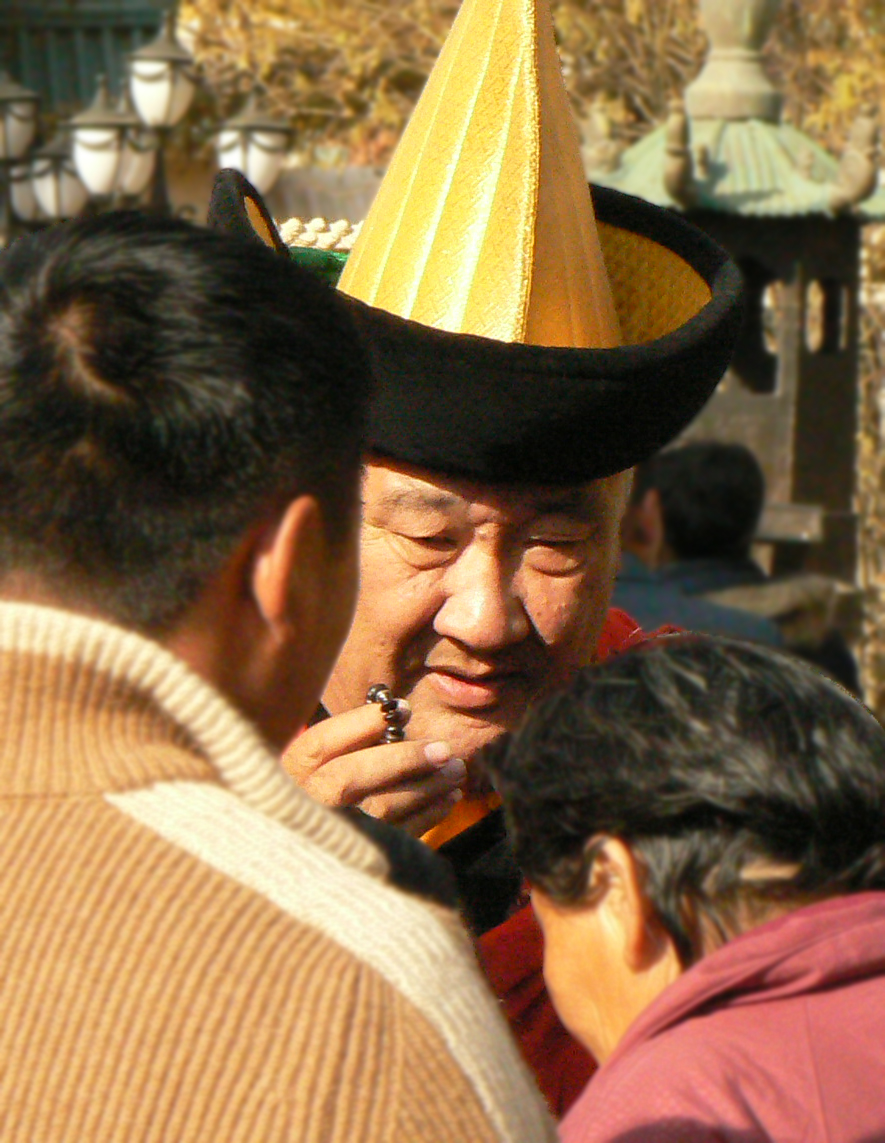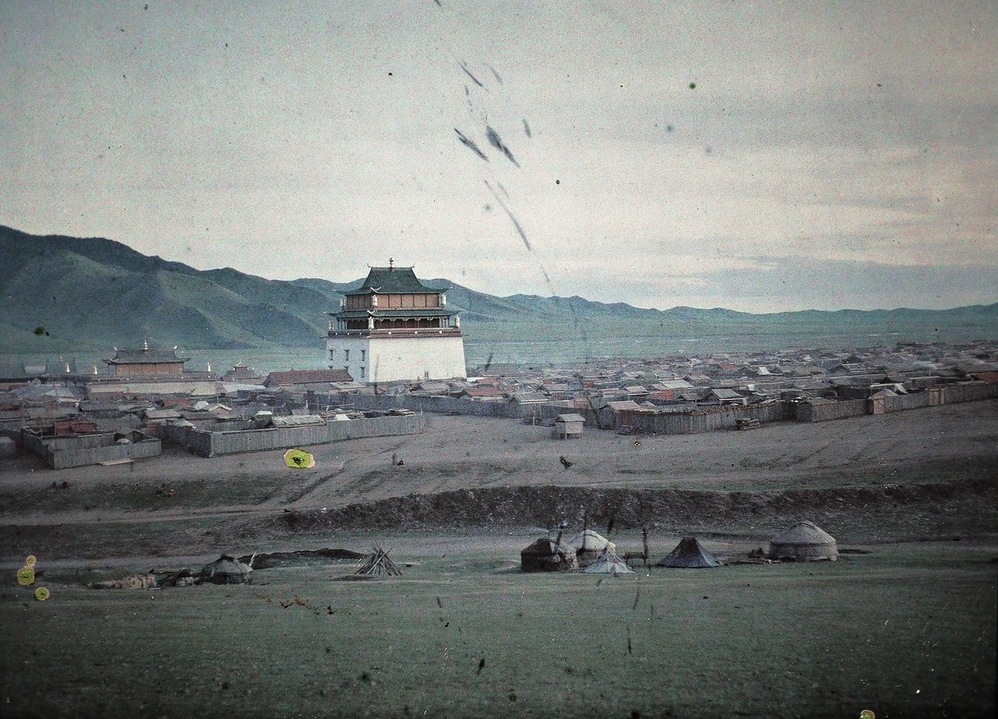|
Khambo Lama
A Khambo Lama ( bo, མཁན་པོ་བླ་མ; mn, Хамба лам; russian: Хамбо-лама) is the title given to the senior lama of a Buddhist monastery in Mongolia and Russia. It is sometimes translated to the Christian title abbot. It is the title of the spiritual leader of Buddhists in Buryatia (from the 18th century); the leaders of Buddhists in Tuva and Altai; and the head of Mongolian Buddhists. It is derived from the Buddhist academic title Khenpo. Current khambo lamas Mongolia *Khambo lama of Gandantegchinlen Khiid - Khamba Lama, Gabju Demberelyn Choijamts Russia *Buryatia - Pandito Hambo Lama XXIV - Damba Badmayevich Ayusheev *Tuva - Kamba Lama V of Tuva - Saldum Baska (Tsultim Tenzin) * Altai - Hambo Lama - Mergen Vasilyevich Shagayev Gallery File:Hambo Lama.jpg, Khambo lama of the Tamchinsky datsan in 1886 File:Late 1800s photo of Khamba Lama of the Selenginsk Datsan (cropped).png, Late 1800s photo of Khamba Lama of the Selenginsk See also *Bud ... [...More Info...] [...Related Items...] OR: [Wikipedia] [Google] [Baidu] |
Lama
Lama (; "chief") is a title for a teacher of the Dharma in Tibetan Buddhism. The name is similar to the Sanskrit term ''guru'', meaning "heavy one", endowed with qualities the student will eventually embody. The Tibetan word "lama" means "highest principle", and less literally "highest mother" or "highest parent" to show close relationship between teacher and student."lama" from Historically, the term was used for venerated spiritual masters or heads of . Today the title can be used as an [...More Info...] [...Related Items...] OR: [Wikipedia] [Google] [Baidu] |
Republic Of Buryatia
Buryatia, officially the Republic of Buryatia (russian: Республика Бурятия, r=Respublika Buryatiya, p=rʲɪsˈpublʲɪkə bʊˈrʲætʲɪjə; bua, Буряад Улас, Buryaad Ulas, , mn, Буриад Улс, Buriad Uls), is a republic of Russia located in Siberia. It is the historical native land of indigenous Buryats. Formerly part of the Siberian Federal District, it has been a part of the Russian Far East since 2018. Its capital is the city of Ulan-Ude, which means Red Gateway in Buryat Mongolian. Its area is with a population of 978,588 ( 2021 Census). Geography The republic is located in the south-central region of Siberia along the eastern shore of Lake Baikal. *Area: *Borders: **Internal: Irkutsk Oblast (W/NW/N), Zabaykalsky Krai (NE/E/SE/S), Tuva (W) **International: Mongolia (Bulgan Province, Khövsgöl Province and Selenge Province) (S/SE) **Water: Lake Baikal (N) *Highest point: Mount Munku-Sardyk () Rivers Major rivers include: * Barguzi ... [...More Info...] [...Related Items...] OR: [Wikipedia] [Google] [Baidu] |
Buddhism In Kalmykia
__NOTOC__ The Kalmyk people are the only people of Europe whose national religion is Buddhism. In 2016, 53.4% of the population surveyed identified themselves as Buddhist. They live in Kalmykia, a federal subject of the Russian Federation located in southwestern Russia. The border faces Dagestan to the south, Stavropol Krai to the southwest, Rostov Oblast to the west, Volgograd Oblast to the northwest and Astrakhan Oblast to the east. The Caspian Sea borders Kalmykia to the southeast. The Kalmyks are the descendants of Oirats who migrated to Europe during the early part of the 17th century. As Tibetan Buddhists, the Kalmyks regard the Dalai Lama as their spiritual leader. The Šajin Lama (Supreme Lama) of the Kalmyks is Erdne Ombadykow, a Philadelphia-born man of Kalmykian origin who was brought up as a Buddhist monk in a Tibetan monastery in India from the age of seven. Ombadykow was appointed to this position by the 14th Dalai Lama in 1992, who identified him as th ... [...More Info...] [...Related Items...] OR: [Wikipedia] [Google] [Baidu] |
Buddhism In Buryatia
Buddhism in Buryatia—a regional form of Buddhism. The spread of Buddhism into Buryatia Historical evidence gives reason to believe that, from the 2nd century BC, proto-Mongol peoples (the Xiongnu, Xianbei, and Khitans) were familiar with Buddhism. On the territory of the Ivolginsk Settlement, remains of Buddhist prayer beads were found in a Xiongnu grave.Александр Берзин, Тибетский буддизм: история и перспективы развития, M., 1992 (Alexandr Berzin, ''Tibetan Buddhism: History and Future Prospects'', Moscow 1992; Буддизм, Л. Л. Абаева, М., Республика, 1991 (''Buddhism'', L.L. Abaeva, Respublika, Moscow 1991) At the beginning of the 17th century, Tibetan Buddhism penetrated northward from Mongolia to reach the Buryat population of Transbaikalia (the area just east of Lake Baikal). Initially, Buddhism disseminated primarily among the ethnic groups that had recently migrated out of Khalkha Mongo ... [...More Info...] [...Related Items...] OR: [Wikipedia] [Google] [Baidu] |
Buddhism In Russia
Historically, Buddhism was incorporated into Siberia in the early 17th century. Buddhism is considered to be one of Russia's traditional religions and is legally a part of Russian historical heritage. Besides the historical monastic traditions of Buryatia, Tuva and Kalmykia (the latter being the only Buddhist-majority republic in Europe), the religion of Buddhism is now spreading all over Russia, with many ethnic Russian converts. The main form of Buddhism in Russia is the Gelukpa school of Tibetan Buddhism, informally known as the "yellow hat" tradition, with other Tibetan and non-Tibetan schools as minorities. Although Tibetan Buddhism is most often associated with Tibet, it spread into Mongolia, and via Mongolia into Siberia before spreading to the rest of Russia. Datsan Gunzechoinei in Saint Petersburg is the northernmost Buddhist temple in Russia. History The first evidence of the existence of Buddhism in the territory of modern Russia (more specifically Siberia, the regi ... [...More Info...] [...Related Items...] OR: [Wikipedia] [Google] [Baidu] |
Buddhism In Mongolia
Buddhism is the largest and official religion of Mongolia practiced by 53% of Mongolia's population, according to the 2010 Mongolia census. Buddhism in Mongolia derives much of its recent characteristics from Tibetan Buddhism of the Gelug and Kagyu lineages, but is distinct and presents its own unique characteristics. Buddhism in Mongolia began with the Yuan dynasty (1271-1368) emperors' conversion to Tibetan Buddhism. The Mongols returned to shamanic traditions after the collapse of the Mongol Empire, but Buddhism reemerged in the 16th and 17th centuries. Characteristics Buddhism in Mongolia derives many of its recent characteristics from Tibetan Buddhism of the Gelug and Kagyu lineages, but is distinct and presents its own unique characteristics. Traditionally, the Mongolian ethnic religions involved worship of Heaven (the "eternal blue sky") and ancestors and the ancient North Asian practices of shamanism, in which human intermediaries went into trance and spoke to and ... [...More Info...] [...Related Items...] OR: [Wikipedia] [Google] [Baidu] |
Tamchinsky Datsan
The Tamchinsky datsan ( bua, Тамчын дасан, ''Tamchyn Dasan''), also called the Tamchinskii datsan or Gusinoozyorsk Datsan, is a Buddhist monastery founded in the mid-18th century in the village of Gusinoye Ozero, located on the south-western shore of Lake Gusinoye, Buryat Republic, Russia. In 1809, the monastery became "the center of Buddhism in eastern Siberia". Lama Dashi-Dorzho Itigilov Dashi-Dorzho Itigilov (russian: Даши-Доржо Итигэлов; bua, Этигэлэй Дашадоржо, ''Etigelei Dashadorjo''; 1852–1927) was a Buryat Buddhist lama of the Tibetan Buddhist tradition. Born in the countryside of Burya ... received his medical training here. The temple, which was ransacked in the 1930s, was being restored as of 2013 "as part of the revival of the Buddhist cultural and spiritual legacy in Buriatiia." Ceremonies at the temple were filmed in the Pudovkin's fictional drama Storm Over Asia (1928 film). References {{Reflist Buddh ... [...More Info...] [...Related Items...] OR: [Wikipedia] [Google] [Baidu] |
Damba Badmayevich Ayusheev
Damba Badmaevich Ayusheev (born on September 1, 1962 in Bursomon, Krasnochikoysky District, Chita Oblast, USSR)—the XXIV Pandito Khambo Lama—a Head of the Buddhist Traditional Sangkha of Russia. Biography In 1980 Damba Ayusheev graduated from Petrovsk-Zabaykalsky Pedagogical College, then he worked as a teacher at Kukursk secondary school in Agin-Buryat Autonomous Okrug. By the assignment of Aginsky Datsan he entered Zanabazar Buddhist University in Ulan-Bator (Mongolia) in 1983 and graduated from it in 1988. Specialization — Tibetan Medicine. As designated by the Central Spiritual Administration of Buddhists, during a year he was a curator of the USSR Soviet students studying at Buddhist University. Then he served as Amchi Lama at Ivolginsky datsan. In 1991 he was appointed as Shireete Lama (abbot) at Baldan Breybun datsan in the settlement of Murochi, Kyakhtinsky district, the first datsan being at the stage of revival in the territory of ethnic Buryatia at that t ... [...More Info...] [...Related Items...] OR: [Wikipedia] [Google] [Baidu] |
Mongolia
Mongolia; Mongolian script: , , ; lit. "Mongol Nation" or "State of Mongolia" () is a landlocked country in East Asia, bordered by Russia to the north and China to the south. It covers an area of , with a population of just 3.3 million, making it the world's most sparsely populated sovereign nation. Mongolia is the world's largest landlocked country that does not border a closed sea, and much of its area is covered by grassy steppe, with mountains to the north and west and the Gobi Desert to the south. Ulaanbaatar, the capital and largest city, is home to roughly half of the country's population. The territory of modern-day Mongolia has been ruled by various nomadic empires, including the Xiongnu, the Xianbei, the Rouran, the First Turkic Khaganate, and others. In 1206, Genghis Khan founded the Mongol Empire, which became the largest contiguous land empire in history. His grandson Kublai Khan conquered China proper and established the Yuan dynasty. After the co ... [...More Info...] [...Related Items...] OR: [Wikipedia] [Google] [Baidu] |
Gandantegchinlen Khiid
The Gandantegchinlen Monastery ( mn, Гандантэгчинлэн хийд, ''Gandantegchinlen khiid'', short name: Gandan mn, Гандан) is a Mongolian Buddhist monastery in the Mongolian capital of Ulaanbaatar that has been restored and revitalized since 1990. The Tibetan name translates to the "Great Place of Complete Joy". It currently has over 150 monks in residence. It features a 26.5-meter-high statue of Avalokiteśvara. It came under state protection in 1994. History The monastery was constructed by order of the 5th Jebtsundamba Khutuktu in 1809. The first temple was the Gungaachoilin Datsan. Only one wooden pillar remains from this temple. In 1838, the Gandantegchenlin Temple was built along with the private residence of the Jebtsundamba Khutuktu. The 13th Dalai Lama stayed in the residence in 1904. In 1840, the Vajradhara Temple was built. In 1869, the Zuu Temple was built. In 1913, the tall Avalokiteśvara temple was built. In 1925, the temple for keeping the re ... [...More Info...] [...Related Items...] OR: [Wikipedia] [Google] [Baidu] |
Khenpo
The term khenpo (Tib. མཁན་པོ། mkhen po), or khenmo (in the feminine) is a degree for higher Buddhist studies given in Tibetan Buddhism. In the Nyingma, Kagyu, and Sakya traditions, the title is awarded usually after a period of 13 years of intensive study after secondary school. It may roughly translate to either a bachelor's degree, or nowadays more likely to a terminal degree in Buddhist Studies equivalent to a PhD or MPhil. The degree is awarded to students who can publicly defend their erudition and mastery in at least five subjects of Indo-Tibetan Buddhism, namely Prajñāpāramitā, Madhyamaka, Pramāṇa, Abhidharma, and Vinaya. After successfully passing their examination they are entitled to serve as teachers of Buddhism. Similar titles of lower standing are De Nod Dzin Pa, and Shor Phon. In the Gelug tradition, the title khenpo refers to either a senior monk who ordains new monastics, or the abbot of a monastery. A comparable title in the Gelug and B ... [...More Info...] [...Related Items...] OR: [Wikipedia] [Google] [Baidu] |


_p307_Kalmyk_people_in_a_buddhist_ceremonie.jpg)



